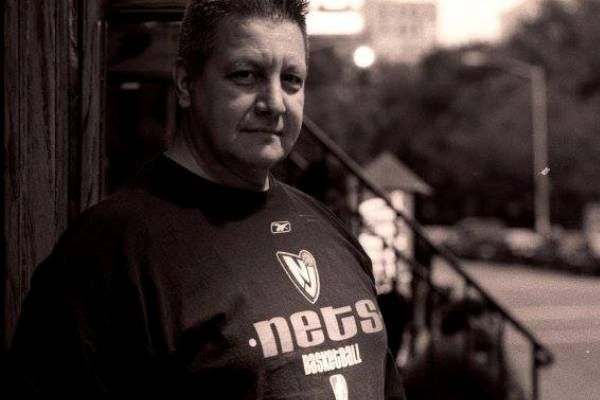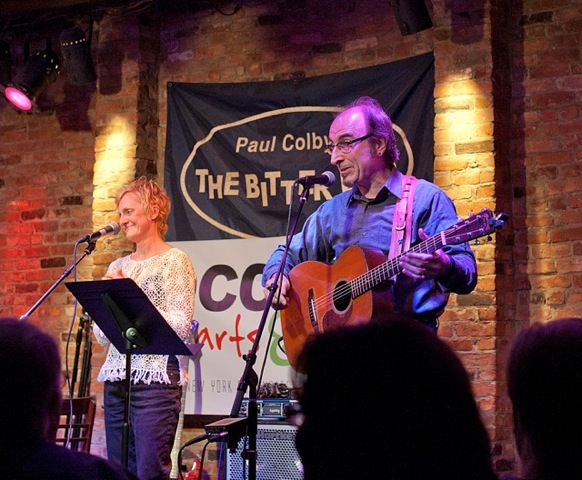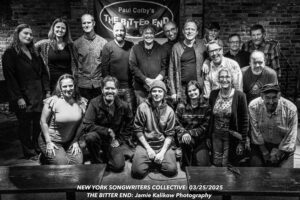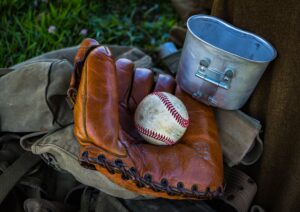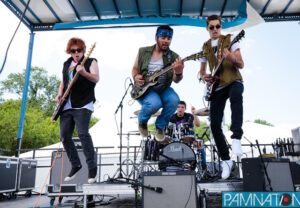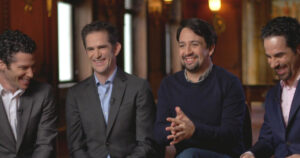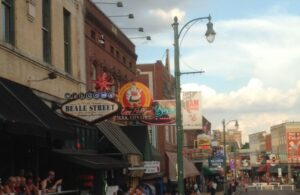I must have sung on the Bitter End stage a hundred times or more. But every time I step onto that carpeted flat with the exposed brick wall behind me I get a chill. Not the scary or nervous kind of chill but the excited, “I can’t believe I’m doing this” kind of thrill-chill. Yeah, I’ll call it a thrill-chill… there’s a new phrase for you.
Kris Kristofferson compared The Bitter End to the Ryman Auditorium in Nashville. Like the Ryman it is “the mother church” of clubs. (The Bitter End: Hanging Out At America’s Night Club, page xiii forward by Kris Kristofferson).
Over the last few years, I’ve been invited to participate a series of themed fund-raising events at The Bitter End, which are organized by my friend Peter Bliss. Peter runs the New York Songwriters Collective so a bunch of us sing one of our tunes or cover a song that we think fits the theme of the night.
Seeing all the young songwriters take the stage got me thinking about the first time I ever went there. It was fall of 1969 and I was in my senior year of high school. I went to see John Sebastian who had recently done an iconic unscheduled performance at The Woodstock Music And Art Fair that August. I had never been to see music outside of a school dance or once when the WMCA Good Guys came to Christ The King HS and did one of their Top-40 radio pop shows.
Since The Summer of Love (1967) I had been venturing into Manhattan with some of my music buddies after school and buying The Village Voice and The East Village Other and sneaking them up to my bedroom. I soon found there was another world drawing me across the East River.
One night my new band-mate Dan Daley and I trained it down to The Village. We took the F train to the West 4th Street stop. Coming up from the subway at The Waverly Theater we found our way to Bleecker Street and eventually into the Bitter End.
I don’t remember what it cost or how we paid but I do remember a doorman who has a distinct post beat vibe to him: mustache, short beard and dark rim glasses. He was probably only 25 but seemed to me like an old guy. (Jeez, what must I look like to a high-schooler?) It was not a bar as it is today. It was a coffee house, so no need for us to pull out the fake ID. Instead of cabaret tables and chairs there were church pews lined up in front of the stage. We slid into the second row a few feet away from center stage. A nascent hippie waitress, probably a student at NYU took our order. I’m sure I had some kind of espresso concoction. The word latte was not in the pop culture lexicon yet.
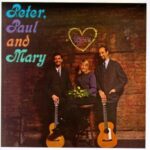 Then I realized I was looking at that exposed brick wall of the stage. I recognized it from the first Peter Paul And Mary album. I used to listen to it in my school library. That brick wall said a lot to me. It was raw and unfinished, always a work in progress. I came from a polite world of trim, clean and finished (some might say faux-finished) things. This was different. I liked being different and being in this place made me different. Immediately.
Then I realized I was looking at that exposed brick wall of the stage. I recognized it from the first Peter Paul And Mary album. I used to listen to it in my school library. That brick wall said a lot to me. It was raw and unfinished, always a work in progress. I came from a polite world of trim, clean and finished (some might say faux-finished) things. This was different. I liked being different and being in this place made me different. Immediately.
Then, John Sebastian was introduced. He charmed us with his remarkable songs and musicianship. But there was something else. He talked to us. He told stories. He was hip. And, he was ten feet away from me. It is a cliché but it is true. It was like being in his living room. The intimacy of the experience was something I had never experienced up until that night. I could see his fingers on the neck of the guitar, hear his voice present and clear, watch his face and eyes as he sang and talked. I thought to myself that this is what music is supposed to be like.
I think I’ve been chasing that spirit ever since. I’d like to think that I catch it from time to time in my own performance.
That was the first of many nights I would spend in the audience at the Bitter End. Little did I know that I would also be on that stage more times than I could have imagined.
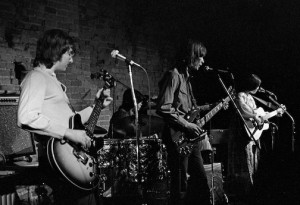 As it turned out, much of my music career for the next fifteen years was spent within a five-block radius of the Bitter End. As a member of the band Revival (as in folk Revival) or as a side man or band leader I would play at The Gaslight, The Village Gate, Folk City, the Café Wha?, The Back Fence, Kenny’s Castaways and, of course, The Bottom Line.
As it turned out, much of my music career for the next fifteen years was spent within a five-block radius of the Bitter End. As a member of the band Revival (as in folk Revival) or as a side man or band leader I would play at The Gaslight, The Village Gate, Folk City, the Café Wha?, The Back Fence, Kenny’s Castaways and, of course, The Bottom Line.
For me, and many others it started with The Bitter End. What that room has meant to the New York music scene and the world-wide music and entertainment industry can not be underestimated. The list of poets, comedians and musicians who started there or performed there is truly mind blowing. Take a look at Fred Weintraub’s page.
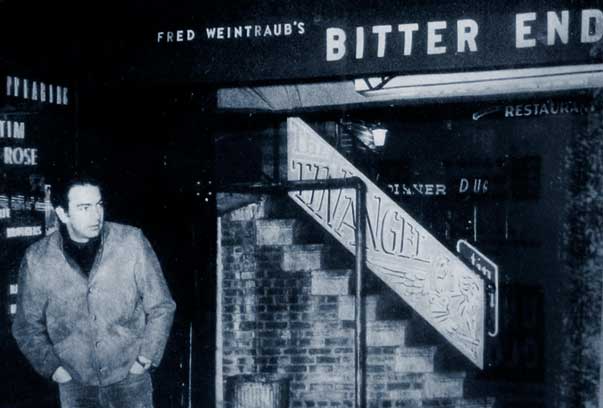
Neil Diamond (1962) in front of the club. Notice The Tin Angel which was a restaurant upstairs from the Bitter End also run by Fred Weintraub and Paul Colby. Joni Mitchell titled a song for it.
Fred was the original owner before Paul Colby bought it in 1974. Paul has a book called The Bitter End: Hanging Out At America’s Nightclub. Check it out too.
Here’s a video of me and Mary Ellen Bernard performing there for Occupy Hearts And Minds back in 2012.
Finally, I post this blog in the memory of Ken Kelly “The Mayor Of Bleecker Street” who passed away on August 13, 2013. “Kelly” manned the door and watched out for everyone at the Bitter End for 26 years from 1987 to 2013.
